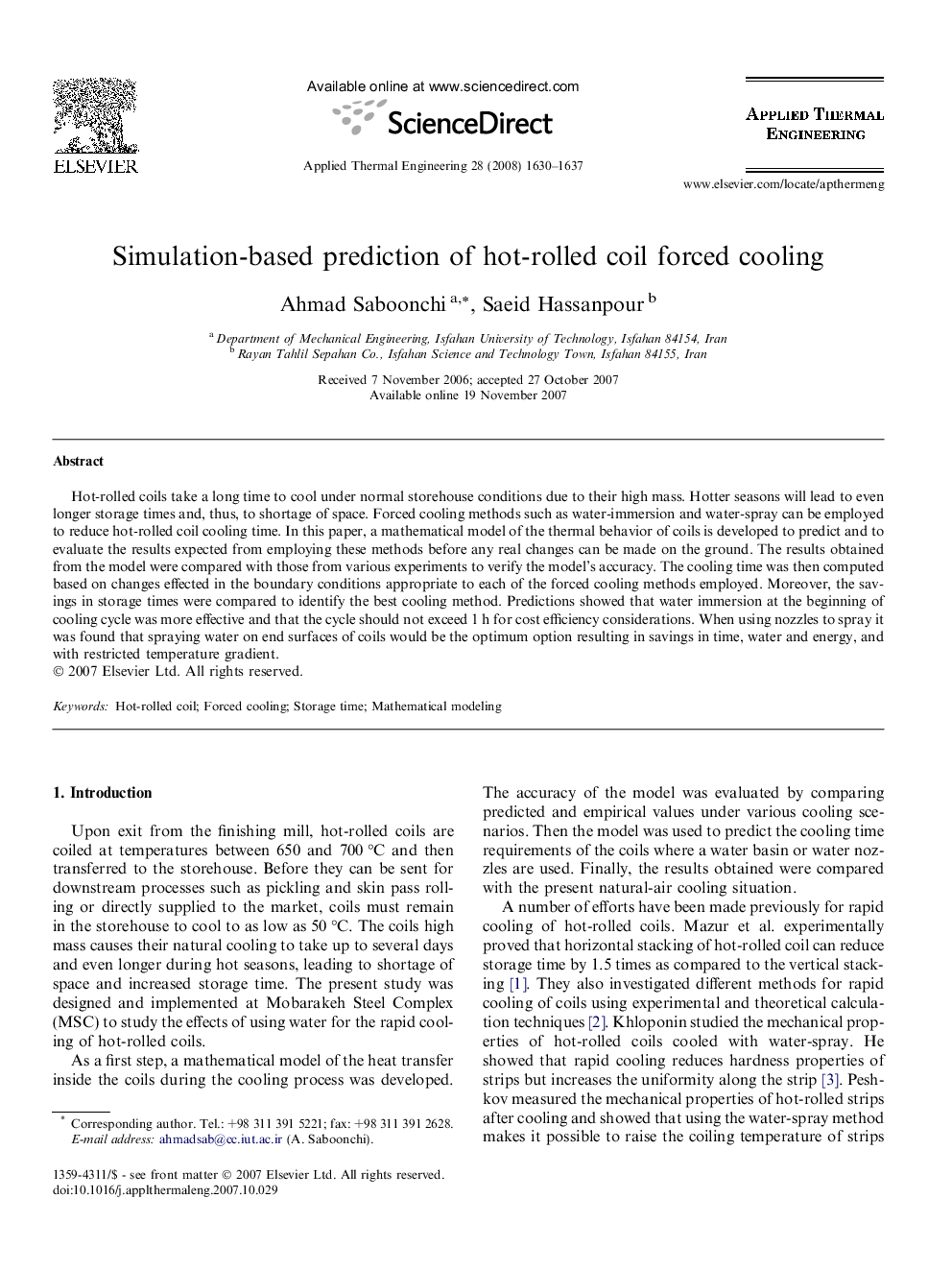| Article ID | Journal | Published Year | Pages | File Type |
|---|---|---|---|---|
| 648682 | Applied Thermal Engineering | 2008 | 8 Pages |
Hot-rolled coils take a long time to cool under normal storehouse conditions due to their high mass. Hotter seasons will lead to even longer storage times and, thus, to shortage of space. Forced cooling methods such as water-immersion and water-spray can be employed to reduce hot-rolled coil cooling time. In this paper, a mathematical model of the thermal behavior of coils is developed to predict and to evaluate the results expected from employing these methods before any real changes can be made on the ground. The results obtained from the model were compared with those from various experiments to verify the model’s accuracy. The cooling time was then computed based on changes effected in the boundary conditions appropriate to each of the forced cooling methods employed. Moreover, the savings in storage times were compared to identify the best cooling method. Predictions showed that water immersion at the beginning of cooling cycle was more effective and that the cycle should not exceed 1 h for cost efficiency considerations. When using nozzles to spray it was found that spraying water on end surfaces of coils would be the optimum option resulting in savings in time, water and energy, and with restricted temperature gradient.
